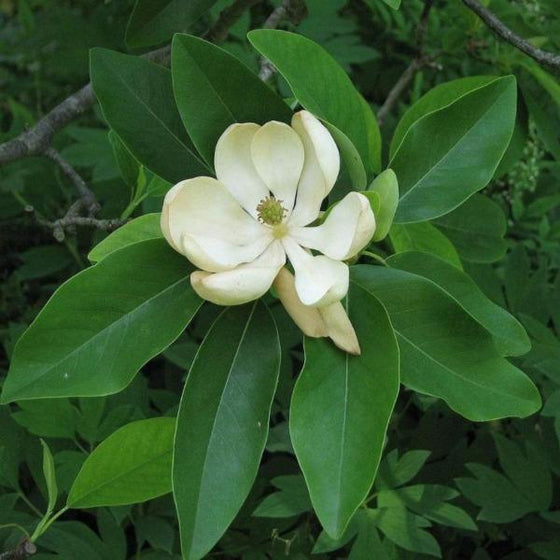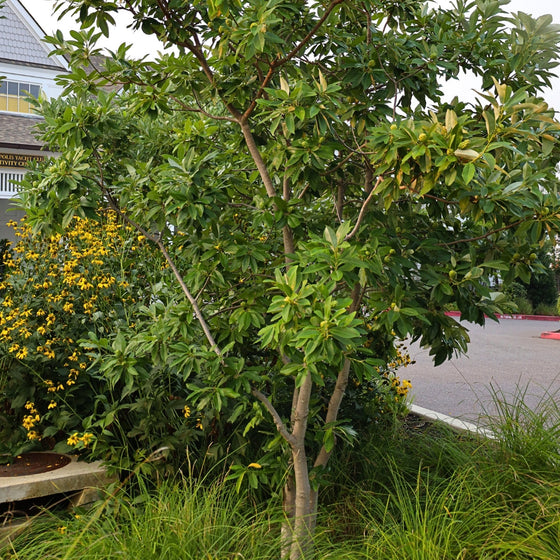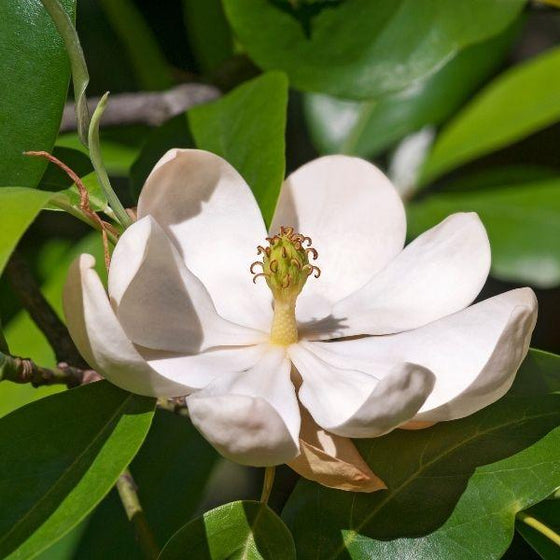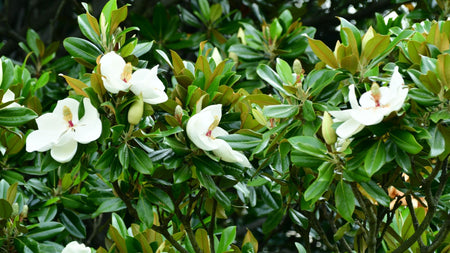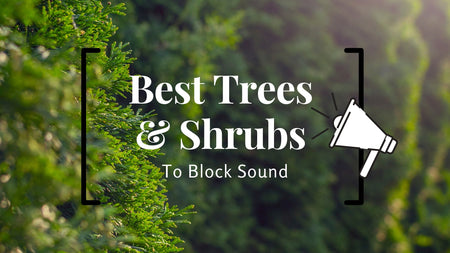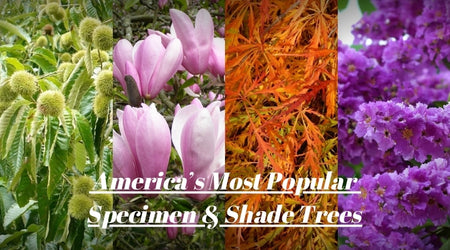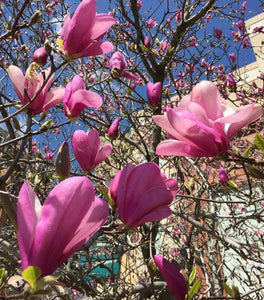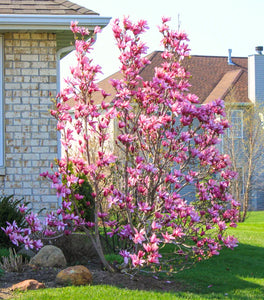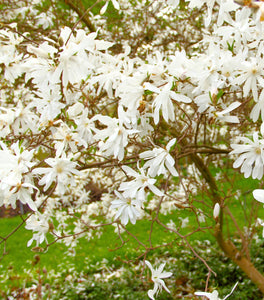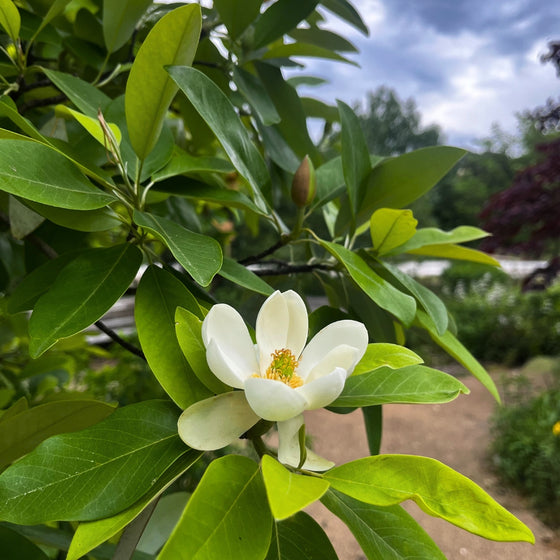
Images Depict Mature Plants
Sweetbay Magnolia for Sale Online
Sweetbay Magnolia (Magnolia virginiana) is a beautiful deciduous to semi-evergreen tree known for its elegant, creamy-white flowers and glossy, dark green leaves. Blooming from late spring to early summer, the fragrant flowers of the Sweetbay Magnolia emit a delightful lemony scent that fills the garden with a refreshing aroma. This graceful tree grows to a height of 10 to 20 feet in cooler climates and can reach up to 50 feet in warmer regions, with a spread of 10 to 20 feet, making it perfect for a variety of landscape uses. Its multi-stemmed or single-trunk form and smooth gray bark add year-round visual interest, even during the winter months.
Sweetbay Magnolia thrives in USDA hardiness zones 5 through 9, preferring full sun to partial shade and moist, well-drained soils. Unlike other magnolia species, this tree is highly tolerant of wet soils and can even be planted near ponds, streams, or rain gardens, making it an excellent choice for challenging, moisture-rich sites. The leaves of the Sweetbay Magnolia are semi-evergreen in warmer zones, providing extended seasonal interest. At the same time, the attractive red seeds produced in late summer and early fall are a favorite food source for birds and wildlife. Whether used as a specimen tree, a privacy screen, or part of a naturalized garden, Sweetbay Magnolia adds elegance, fragrance, and ecological benefits to any landscape.
With its manageable size, Sweetbay Magnolia is also well-suited for smaller gardens and urban landscapes, where its fragrant flowers and appealing form can be enjoyed up close. Its tolerance to different soil types, including clay, makes it adaptable to a variety of conditions, while its moderate growth rate allows it to establish itself without requiring intensive maintenance. For best results, provide regular watering during the first growing season to develop a robust root system. Mulching around the base helps retain moisture and protect the roots, ensuring healthy growth. Sweetbay Magnolia is a versatile and low-maintenance choice for any gardener seeking a tree that offers beauty, wildlife support, and year-round interest.
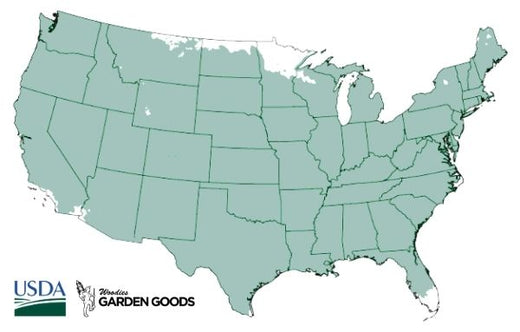
| Hardiness Zone: | 5-9 |
|---|---|
| Mature Height: | 10 to 20 Feet |
| Mature Width: | 10 to 15 Feet |
| Classification: | Broad leaved deciduous tree, spring flowering |
| Sunlight: | Full sun |
| Habit: | Upright, umbrella shaped canopy. |
| Foliage: | Dark green, yellow color in fall |
| Flower Color: | White, fragrant |
| Pruning Season: | No pruning needed |
| Soil Condition: | Any well drained soil |
| Water Requirements: | Water well until established |
| Uses: | Tolerates moist soil and full sun. Full sun brings out the best fall color; will adapt to drier sites |
How to Care for Sweetbay Magnolia
Before you buy a Sweetbay Magnolia Tree, make sure to read about the recommended care instructions to keep this plant healthy and thriving.
How do I plant a Sweetbay Magnolia Tree?
Planting a Sweetbay Magnolia begins with selecting an ideal location that ensures the tree thrives and showcases its beauty. Choose a site that offers full sun to partial shade, as Sweetbay Magnolia grows best in areas with plenty of light while still being tolerant of partial shade. The tree prefers moist, well-drained, slightly acidic soils, and it is particularly well-suited to wet areas, such as near ponds or rain gardens. Begin by digging a hole twice as wide and as deep as the root ball to allow ample space for root growth. Carefully place the tree in the hole, ensuring that the top of the root ball is level with or slightly above the surrounding ground. Backfill the hole with a mixture of native soil and organic compost, and water thoroughly to eliminate air pockets and help the roots settle in. After planting your Sweetbay Magnolia, it is crucial to provide consistent moisture, especially during the first growing season, to establish a strong root system. Water deeply once or twice a week, depending on the weather and soil conditions, ensuring the soil stays evenly moist without becoming waterlogged. Adding a 2-3 inch layer of mulch around the base of the tree helps retain soil moisture, suppress weeds, and regulate temperature; just be sure to keep the mulch away from the trunk to prevent rot. Space multiple trees about 15 to 20 feet apart if planting in a row to allow for their mature spread. By following these planting and early care steps, you will ensure your Sweetbay Magnolia grows healthy and strong, bringing fragrant blooms and glossy green foliage to your garden for years to come.
How do I water Sweetbay Magnolia Trees?
Watering Sweetbay Magnolia trees is essential to support their healthy growth, especially during the first few years after planting. During the establishment phase, provide consistent, deep watering once or twice a week, depending on rainfall and soil conditions. Sweetbay Magnolia thrives in moist soil, so make sure the root zone remains evenly moist but not waterlogged. Deep watering encourages the roots to grow deeply, improving the tree’s resilience to drought over time. Using a soaker hose or drip irrigation is an excellent way to deliver water slowly and directly to the root zone, reducing evaporation and ensuring efficient hydration. Once Sweetbay Magnolia is established, it becomes more tolerant of occasional dry spells but still benefits from supplemental watering during prolonged periods of heat or drought. Always check the top few inches of soil; if it feels dry, it is time to water. Mulching around the base of the tree helps conserve moisture, regulate soil temperature, and reduce the need for frequent watering. Apply a 2-3 inch layer of organic mulch, such as bark or pine needles, making sure to keep the mulch a few inches away from the trunk to prevent rot. Proper watering practices will help ensure that your Sweetbay Magnolia remains lush, healthy, and full of vibrant blooms throughout the growing season.
How do I fertilize a Sweetbay Magnolia Tree?
Fertilizing a Sweetbay Magnolia tree is essential for promoting vigorous growth, healthy foliage, and an abundance of its fragrant blooms. The best time to fertilize is in early spring before new growth begins, using a balanced, slow-release fertilizer specifically formulated for acid-loving plants, such as a 10-10-10 or 12-4-8 blend. Spread the fertilizer evenly around the root zone, extending out to the tree's drip line, but keep it at least a few inches away from the trunk to prevent root burn. Water thoroughly after fertilizing to help the nutrients penetrate the soil and reach the roots effectively. Sweetbay Magnolia benefits from these nutrients to maintain its rich green leaves and produce plentiful, aromatic flowers. For ongoing nourishment, you can also apply a second, light feeding in early summer, especially if your soil is sandy or lacks organic matter. Alternatively, enrich the soil with organic compost or well-aged manure each year, which slowly releases nutrients while improving soil quality and structure. Mulching around the base of the Sweetbay Magnolia not only conserves moisture but also gradually adds organic matter as it decomposes, providing a consistent source of nutrients. Avoid fertilizing late in the growing season, as this can stimulate new growth that may not harden off properly before winter. With proper fertilization, your Sweetbay Magnolia will grow strong, remain healthy, and reward you with lush foliage and beautiful blossoms.

How do I Prune a Sweetbay Magnolia Tree?
Pruning a Sweetbay Magnolia tree is key to maintaining its natural beauty and encouraging healthy growth. The best time to prune is in late winter or early spring, before new growth begins, as this minimizes stress on the tree. Start by removing any dead, damaged, or diseased branches, cutting them back to healthy wood to promote overall tree health. Use clean, sharp pruning shears to ensure precise cuts, which will help the tree heal properly and reduce the risk of pests or disease. Sweetbay Magnolia has an elegant, open growth habit, so avoid over-pruning and instead focus on shaping the tree to enhance its natural form by removing only crossing or rubbing branches that can cause damage. When pruning Sweetbay Magnolia, it is important to make cuts just above a lateral bud or branch to encourage branching and create a more appealing structure. If the tree is young, light pruning can be done to shape its future growth, while older trees may need only minimal pruning to maintain their appearance. Avoid heavy pruning, as it can interfere with flowering and disrupt the tree's characteristic form. Keeping a natural, slightly open canopy allows for better airflow, reducing the chance of fungal issues and ensuring that sunlight reaches all parts of the tree. With careful, regular pruning, your Sweetbay Magnolia will thrive, producing glossy foliage and abundant, fragrant blooms that add elegance to your garden year after year.

